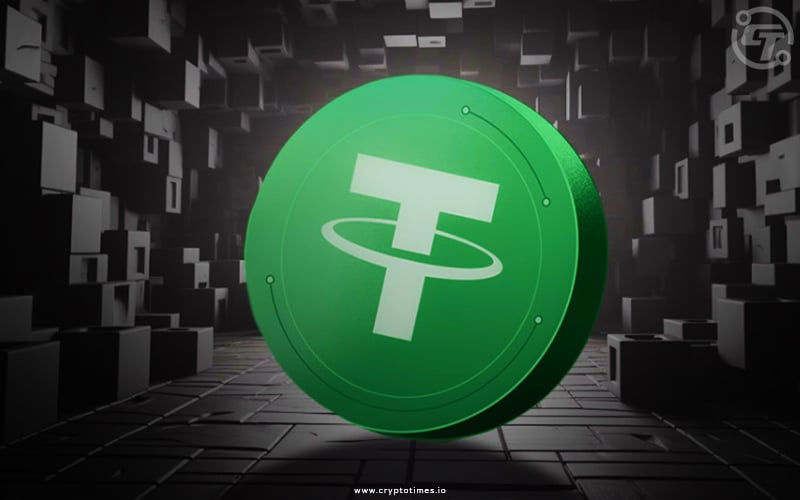In the rapidly evolving landscape of modern commerce, businesses are constantly seeking innovative solutions to streamline their operations and enhance customer satisfaction. One such solution gaining prominence is the integration of USDT payments, a stable and efficient digital currency, into their payment systems.
In this article, we will delve into the world of USDT transactions and explore the compelling reasons why businesses should consider embracing this digital currency. We’ll give you a thorough rundown of how this payment option might help your company.
Additionally, we’ll discuss various ways to accept payments in USDT and guide you through the decision-making process to determine if it aligns with your business goals and customer needs.
How The USDT Payment Works
USDT is a stablecoin designed to maintain a 1:1 peg with the US dollar, making it a stable asset in the cryptocurrency market.
USDT, short for Tether, is issued by Tether Limited and backed by equivalent reserves of fiat currency. The company prepares reserve funds and then issues a corresponding quantity of USDT tokens, storing them on blockchains such as Ethereum (in the form of ERC-20 standard USDT).
Prior to issuance, audit information is provided to verify the reserve funds. It is commonly used as a hedging tool in trading pairs and for cross-border payments. Despite controversies, USDT remains a digital asset for value storage in the digital economy.
The utility of USDT tokens is multifaceted. They serve as a means to securely store, transmit, and receive US dollars within the realm of cryptocurrency exchanges. Additionally, USDT tokens can be utilized for the purchase of goods and services, extending their functionality beyond a mere store of value.
The lifecycle of USDT tokens follows a transparent and auditable process. Users who deposit US dollars into Tether’s reserve account start the process of creating them.
Conversely, USDT tokens are systematically retired when users opt to redeem them for US dollars. This transparency is reinforced by Tether’s practice of publishing a real-time ledger displaying all USDT balances and transaction details on their website. This meticulous record-keeping mechanism provides users with the confidence that each USDT token they hold is unequivocally backed by an equivalent US dollar.
These USDT payment processors not only streamline your financial operations but also provide the reliability needed to navigate the complexities of the digital currency realm. As technology continues to reshape the business landscape, choosing this payment path paves the way for future success, solidifying your position at the forefront of modern commerce.
Advantages of USDT Payments
- Price Stability: USDT’s value is pegged to the US dollar, meaning its price remains relatively stable compared to other cryptocurrencies like Bitcoin and Ethereum, which experience significant price fluctuations. This makes USDT a relatively reliable choice for trading and storing value.
- Cross-Border Payments: USDT is a digital currency that enables quick and cost-effective international transfers. This is highly attractive for cross-border trade and international payments, especially compared to traditional banking or remittance services.
- Transparency: Tether Limited claims to maintain a one-to-one correspondence between the value of each USDT and their USD reserves, publishing monthly audit reports. Despite controversies, this transparency enhances investor confidence.
- High Liquidity: USDT is widely used in cryptocurrency trading, resulting in high liquidity on many cryptocurrency exchanges. This means you can easily buy, sell, and exchange USDT for other cryptocurrencies or fiat currencies.
- Store of Value: Some individuals use USDT as a stable store of value to protect against inflation or market instability in fiat currencies.
- Bypassing Banking Restrictions: USDT transactions and transfers are typically not subject to banking restrictions or government regulations, making it a means to circumvent the traditional financial system.
Risks Associated With USDT
- Regulatory Risk: As the use of stablecoins like USDT continues to grow, regulatory authorities may take measures to regulate their issuance and usage. This could lead to limitations on the availability of USDT or requirements for users to provide more identity information for compliant usage.
- Market Risk: While USDT typically maintains a 1:1 peg with its value, in times of market instability or unusual circumstances, its price may fluctuate. Additionally, since the USDT market relies heavily on exchanges for liquidity, any issues with a particular exchange could impact the price and liquidity of USDT.
- Technical Risk: Like other cryptocurrencies, USDT uses blockchain technology, making it susceptible to technical risks such as network attacks, blockchain forks, or smart contract vulnerabilities.
- Legal and Compliance Risk: The use and holding of USDT may involve legal and compliance risks depending on the laws and regulations of different countries and regions. Some countries may implement bans or restrictions on cryptocurrencies or require users to disclose their cryptocurrency holdings.
Also Read: Crypto Regulations: Protector or Destroyer of Crypto Innovation?
Methods for Receiving USDT Payments
Businesses have the flexibility to adapt USDT transactions through several approaches, including:
Cryptocurrency Payment Processors: Utilize services like UniPayment or B2BinPay to streamline USDT payments without the need for a dedicated digital wallet.
Digital Currency Exchanges: Convert USDT into other cryptocurrencies or fiat currencies using platforms like Kraken, Binance or OKEx.
Digital Currency Wallets: Maintain USDT in a secure wallet through reputable providers like Coinbase or Blockchain.com.
Also Read: PayPal Stablecoin PYUSD: A Game-Changer in Global Payments
Conclusion:
In today’s era of rapid technological advancement, businesses are presented with the opportunity to adapt and thrive in a changing landscape. Innovative payment processors, such as those designed for stable digital currencies, emerge as beacons of efficiency and security, providing a reliable means of conducting transactions. With the surge in cryptocurrency usage, integrating these digital transactions into your business can position you competitively.
By embracing this modern payment method, you empower your business with a stable, swift, and cost-effective financial solution, catering to the demands of a dynamic customer base. This forward-thinking approach ensures your






